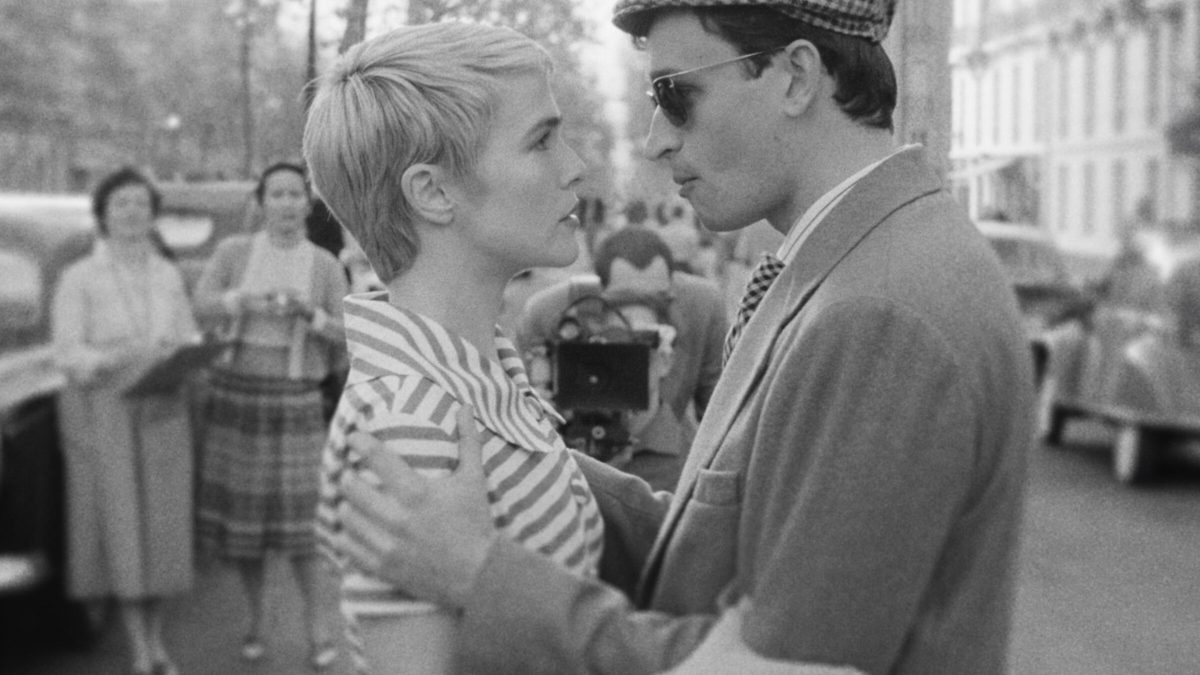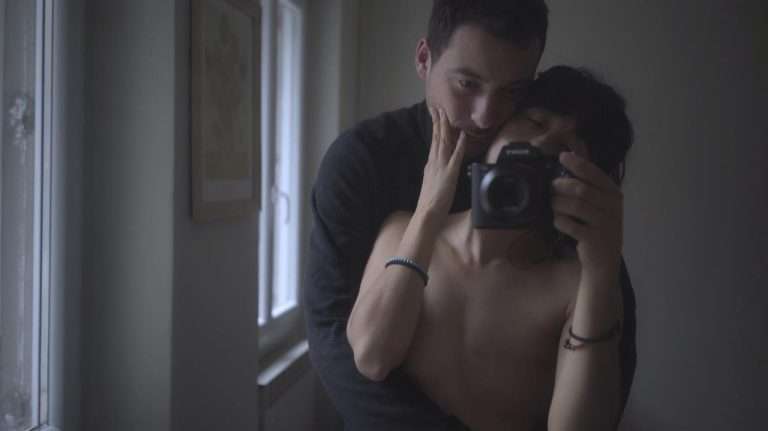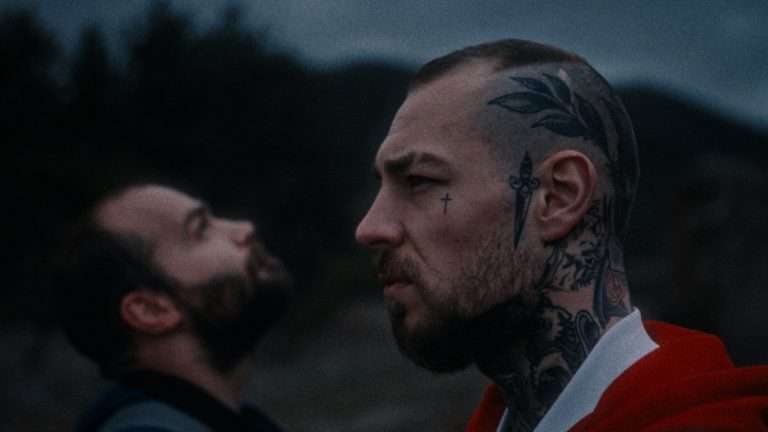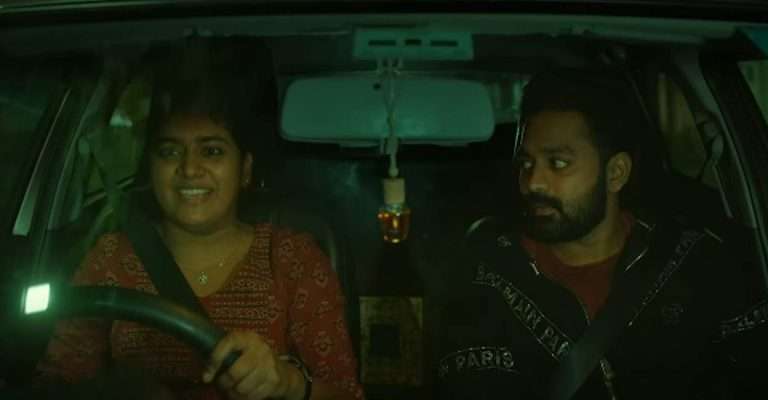The French New Wave of the 1960s was one of the most groundbreaking movements in the history of cinema, and it launched many of the recurring hallmarks that have come to define modern films. Not only did this generation of artists spawn many classic films that have only improved with age, but it also challenged the traditional path taken by creative types to reach a significant level of status within the business.
Film enthusiasts, amateurs, and critics for “Cahiers du Cinéma” cut their teeth learning trivia about their favorite stars and directors, leading to a movement in which encyclopedic cinephiles had a direct say about what they wanted to see on the big screen. While there was certainly competition among this pack of artists, it felt as if each new entry in this canon opened doors for other filmmakers to walk through.
“Nouvelle Vague” is ostensibly about the making of “Breathless,” easily the most famous film of the French New Wave, but it’s more specifically an embodiment of why this era was so exciting. Set in 1959, the black-and-white, French-language film immediately embodies all the stylistic characteristics of the time period that it is set in.
While this level of imitation could feel tedious if it were crafted with too much self-seriousness, Richard Linklater has always been a filmmaker who finds naturalism and intimacy within his work, regardless of the scale that he’s operating in. “Nouvelle Vague” isn’t just a love letter to a time in which filmmaking seemed to genuinely open up to a larger community, but a whimsical hangout feature and coming-of-age story that could be seen as a continuation of what Linklater pulled off with “Dazed and Confused” and “School of Rock.”
It was the masterpiece “The 400 Blows” by François Truffaut (portrayed in the film by Adrien Rouyard) that showed the possibilities of what the French New Wave could mean for international cinema. Acclaimed as a genuine modern classic and welcomed by the critics and pundits at the Cannes Film Festival, “The 400 Blows” inspired jealousy on behalf of Truffaut’s friend and fellow critic Jean-Luc Godard (played by newcomer Guillaume Marbeck), who takes the opportunity to pitch his idea for an inventive new film noir.
Although Godard is told to follow a specific set of guidelines to make his directorial debut commercial, he seems to playfully skirt around all the requirements, except casting the American star Jean Seberg (Zoey Deutch) in a co-leading role.
The creation of “Breathless,” as portrayed in “Nouvelle Vague,” almost feels like an elaborate heist, albeit one where the only risk is artistic reputation. Godard isn’t trying to tear down the system in place, but he seems bored by the rules and regulations that dictate the tone, form, and composition of a film. “Breathless” suggests that Godard’s free-spirited, laid-back attitude gave him a great perspective on the rules of cinema because of the all-encompassing role he occupied.
As a critic, viewer, creator, and maverick, Godard was able to assess how “Breathless” would feel as it was being shot, and was willing to spend time waiting for the moments to feel “right.” The result is an entertaining series of escapades that reflect on the shenanigans involved with putting together such an unusual film. Even for those who have never seen “Breathless” and have no idea why Godard was so influential, “Nouvelle Vague” is eminently watchable as a misshapen comedy of errors.

Linklater’s passion for the French New Wave is apparent, as it is easy to see how the fiercely independent movement appealed to a filmmaker who has found success in going against the grain. The production design, lighting, and mirroring of direct moments in “Breathless” are immaculate, and manage to celebrate the detail-oriented recreation without feeling slavishly devoted to finelining its importance.
The degree to which “Nouvelle Vague” captures what it was like to be on the set of “Breathless” may be up for debate by cinephiles, but Linklater is keenly aware of the narratives that resulted from the haphazard production and eventual cultural success. He also succeeds in developing the type of visual poetry, creative transitions, and snappy dialogue that feel taken directly from the era.
Although it’s remarkable that a Texas-born filmmaker who doesn’t speak French was able to pour such effort into reassembling the Paris of 1959 and 1960, “Breathless” is often gleefully geeky in celebrating its creative community. In the same way that hardcore comic book fans enjoy pointing out Easter Eggs and cameos in the new films from DC or Marvel Studios, cinephiles with an affinity for this era have a plethora of niche references, homages, and stylistic parallels to find in “Nouvelle Vague.”
Even if some of these callbacks are surface-level reminders of all the famous names who happened to be in the same place at the right time, it’s hard not to be charmed by how sincere Linklater’s appreciation is. The brilliantly cast feature memorable appearances by unknown actors playing such venerable figures as Georges de Beauregard, Raoul Coutard, Suzanne Schiffman, Jean Cocteau, Jacques Rivette, Roberto Rossellini, Eric Rohmer, Agnes Varda, Claude Chabrol, and Raymond Cauchetier, among others.
The film’s depiction of Godard as an unpredictable, charmingly idiosyncratic young genius may lessen any emotional stakes, as it’s hard to mine tension out of such a specific story. Nonetheless, Linklater found one of the year’s true discoveries in Marbeck, who is so effortlessly charismatic and mischievous that it’s a true delight to see him silence his doubters. Deutch, the most well-known member of the cast, may have drawn from her own experience playing an American star in the midst of an unusual French ensemble, but her portrayal of Seberg is both a loving tribute and a fascinating perspective of a talented actress in the midst of a tumultuous career move.
“Nouvelle Vague” will have particular value for those who already love “Breathless,” but it’s also a thought-provoking examination of the types of environments that curate creativity. It makes for a nice double feature with “Blue Moon,” Linklater’s other 2025 film, which also seeks to show the unyielding spirit of artists who have no way to prevent themselves from working. If “Blue Moon” is a mournful tale of a man whose career was cut too short, then “Nouvelle Vague” is a cheerful, optimistic celebration of an exciting future.




![Partenonas (Parthenon)[2019]: ‘Venice’ Review – A trance-like postmodern tracing of memory](https://79468c92.delivery.rocketcdn.me/wp-content/uploads/2019/09/Partenonas-Parthenon1-768x512.jpg)



